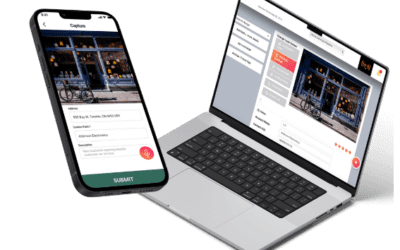Ready to get started?
Battlecards help sales representatives stay on point with a client. You may have heard your colleagues or boss referring to battlecards, or you may already be familiar with them. This ultimate guide will explain what they are, why they are considered so helpful, and how to use them effectively in the sales process.
What Is A Battlecard in Sales?
Battlecards are one-page cheat sheets for sales representatives. Battlecards are one of the few sales enablement resources that focus on the competition and not on the client. They give a quick and convenient comparison between your company and your competition. They prepare you to field difficult questions from a prospective customer about how your company’s products or services match up to your competition.

Why Are Sales Battlecards Important?
There are three big reasons why you should consider battlecards a valuable tool. Effective battlecards allow you to:
Understand the competitive environment
When preparing for a sales event like a trade show, information in this format certainly offers an easy reference for you to “study up” on your competitors, who will also be there. You will need to display a knowledge of your competitors to show that your company is at the forefront of information. You don’t want to be caught trying to operate with your head in the sand.
Equip your sales team with tactical information
If you run a sales team, you want to give them all the advantages you can. When you send them out to see clients, you want them to be fully prepared with facts not only about what you can do for the client, but also about where your company’s products or services excel over the competition. You also want your sales team to answer the difficult questions about your company’s perceived or real shortcomings.
Increase lead to paying customer success rate
By being honest with your clients about the similarities and differences between your company and your competitors, you show a willingness to take criticism and an ability to self-reflect, which fosters trust in a client. The chance of them signing with you then increases. An honest self-appraisal in context beats a willful ignorance of your competitors any day.
How do I Make A Sales Battlecard?
Battlecard templates are available online and give you an easy structure to populate with information. When creating these cards, it is best to do it honestly and critically so that you present the most objective comparison you can.

Different Types of Battlecards
There are three general types of battlecards which you can and should create. You can create them as internal documents used for your salesforce only, or you can make them client-facing as a sales tool. They are:
Competition battlecard
These compare you and your competition at a basic level in terms of infrastructure, quality of service, and other operational aspects. You can compare your company with only one competitor or with many.
Product battlecard
As the term suggests, this battlecard compares products: their quality, affordability, availability, customer perceptions, track record, and any other relevant aspect you feel should be included. You could also create case-based battlecards, comparing a particular product with a similar one from your competitor.
Marketing battlecard
This battlecard displays your company’s marketing efforts and initiatives versus those of your competitor. This is about your advertising and marketing achievements (because you cannot be expected to know their marketing objectives and strategies).
The Anatomy of A Sales Battlecard
Your battlecards can be created from templates you have found online, or you can make them yourself. Either way, you should include the following information in your battlecards, as it is relevant to the specific type of battlecard:
Company overview
This should be on every card, no matter the type, because it contextualizes the rest of the information.
ICP definition
You need to determine who your ideal customer is and describe this type of person with as many objective and descriptive terms as you can.
USP/Key differentiators
What is the thing that makes you and your company different from all of the other companies selling the same kind of product? You must define this and list the key differences.
Competitor’s strengths
Give an honest and factual list of your competitor’s strengths.
Competitor’s weaknesses
Give an honest and factual assessment of your competitor’s weaknesses.
How/Why you win
Give all of the reasons why you win and how you achieve this. Try to be objective, and give facts, not opinions.
Your weaknesses
Give an objective, factual assessment of where you go wrong or what gaps might exist between, for example, client acquisition and service delivery.
Objection handling
How does your company respond to criticisms of your products, services or processes by clients or competitors? When they point out perceived or real shortcomings, what do you say to remedy or mitigate the observations?
Questions to ask
The best way to get clients to respond favorably is to ask questions they will instinctively try to answer. These could be leading or closed-ended questions about your competitor’s perceived or real shortcomings, or open-ended questions designed to get clients talking about their own problems, which can lead to a discussion on how to solve them.

How to Use A Battlecard
These sales tools, as mentioned before, can be used as client-facing or internal documents. For client-facing battlecards, you want to give your client the most objective appraisal of your and your competitor’s strengths and weaknesses. You can turn them into marketing content if you are careful and clever about how you do it.
As an internal sales tool, you can be slightly more ruthless in your observations. Refer to your marketing strategies and other company policies so that your sales team has as much information as possible at their disposal to use in the sales process.
You can use battlecards as prompts for yourself or your sales team at events like trade shows or on calls to clients. They can be a helpful teaching tool for reps who are new to the company and need an overview of the competitive landscape.
Under no circumstances should you ever use a battlecard to defame your competitor. This will invite legal disputes which you will not win if your competitor comes into possession of your battlecards.
You should also refrain from using opinion or emotive language, as this diminishes your credibility. It is also a poor policy to feed your sales team misinformation, as it will always catch up to them and make them look unprofessional. This is the way to lose clients, not gain them.
Battlecards are the sales force’s version of the Trump Cards that children play with. Each deck has a theme: fighter jets, trucks, tanks, bikes, and cars, all featured as decks. The players split up the cards and compare an aspect of each model against the same aspect on the other players’ cards — for example, top speed. Whoever has the highest wins the round.
Battlecards have much higher stakes and you should bear this in mind when creating them. Think of who is meant to see them and who might see them. Never include any information or statement about your company or your competitor that you would not be comfortable declaring out loud in a room full of strangers.
If you follow these suggestions, you will not get yourself or your company into any unnecessary trouble and will not risk damaging your company’s reputation. Battlecards can be a powerful resource for sales representatives. If you have not already started to use them, you should consider creating a deck using the outline above.
Other Articles
Enhancing customer satisfaction with a mobile CRM App
Ready to get started?Are you looking for a way to enhance customer satisfaction in your sales process? Mobile CRM (Customer Relationship Management) apps are the perfect tool to help sales reps stay on top of their customer interactions and keep track of customer...
Lead Management Process
Ready to get started?The lead management process is an important part of any business. It is a method that bridges the gap between marketing and sales which increases the chances of turning prospects into customers and ultimately results in more revenue for your...
Five Key Strategies for Optimizing Field Service Management
Ready to get started?Are you looking for ways to optimize your field service management? If so, you’re in the right place! In this blog post, we’ll explore five key strategies that will help you maximize the efficiency and effectiveness of your field service...




